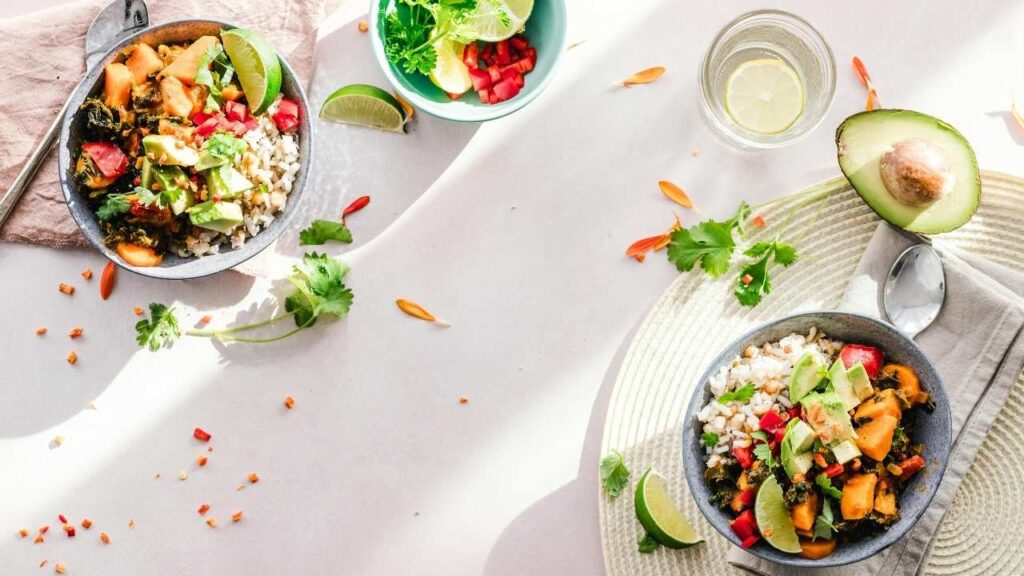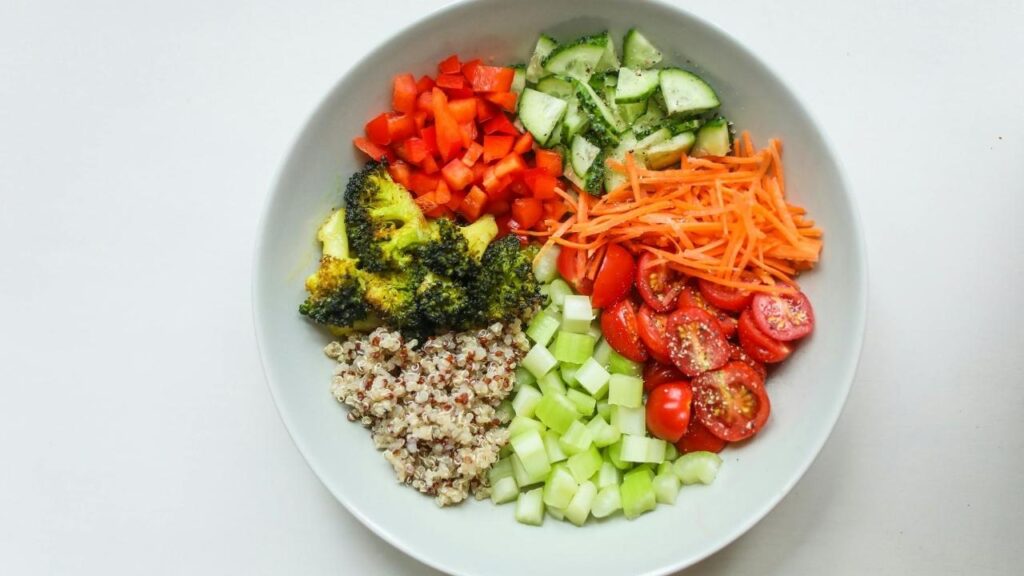The Crusades, which took place from the 11th to the 13th centuries, had a significant impact on history. While many studies focus on the battles and religious aspects of the Crusades, fewer explore how food was influenced by these events. In addition to their religious practices and military gear, the Crusaders introduced a new salad dressing recipe known as “Crusades food in salad.” The Mediterranean and Middle Eastern influences they encountered during their campaigns played a key role in transforming the way salads were prepared in European cuisine.
The Origins of Crusades Food in Salad
The name salad has existed since the first agricultural societies. Though the idea was not widespread, the Crusades helped make the mixture of raw vegetables and more ingredients popular. While pursuing their campaigns, Crusaders discovered Middle Eastern foods and spices that changed what they ate. Fresh vegetables mixed with a variety of herbs and spices was an idea they learned in the Islamic world.
The Crusaders who came home introduced not only ideas about salads but also how to prepare them. In particular, olives, lemon, cucumbers and all kinds of herbs came to be essential ingredients in European salad dishes and they were almost always served with olive oil, vinegar or a squeeze of citrus, just as was common centuries before.
As a result of the Crusades, European dishes took on new flavors and these helped replace traditional, heavy salads with the delicious and refreshing salads we enjoy now.
Key Ingredients Brought Back by Crusaders
They experienced different ways of preparing and eating foods during their travel. Among the things they brought back was oil and seasoning, two main ingredients in Crusades salads.
Olives and Olive Oil
Olives formed a major ingredient in Mediterranean cooking and were popular in the Middle East. After Crusaders interacted with people of the Middle East, they returned with olive fruit and olive oil. In fact, salad dressings are largely built around the role of oil.
Spices and Herbs
The Middle East is famous for cooking with a lot of tasty herbs and spices. Using saffron, cinnamon and cumin, crusaders tried to improve the taste of what they cooked. Mint, parsley and basil were used in European salads, bringing both a fresh taste and a nice scent.
Citrus Fruits
Many Europeans started eating lemons and oranges because of the Crusades. I often used these fruits to make tart salad dressings and also put them on salads to add both taste and interest.

The Evolution of Salads After the Crusades
Upon coming back from the crusades, Europeans benefited from the Crusader’s new culinary skills and food ingredients that influenced how food was seen and eaten in those lands. More people began to like mixing raw veggies with other fresh produce. The taste and method of preparing salads in Europe changed gradually as a result of the Crusades food in salad concept.
The salad continued to develop and change in the periods that followed. At the time of the Renaissance, salads contained many more vegetables, cheeses and sometimes meat. Dressing salads in oil, vinegar and different seasonings was now popular and this added to the lasting impact of Crusades food on European salads.
How Crusades Food in Salad Influenced Mediterranean Cuisine
In the region around the Mediterranean which saw much conflict from the Crusades, a new and unusual way of cooking was developed. Here, because of Crusades traditions, salads are now an important part of daily eating in the Mediterranean. You get a taste of Europe’s fresh greens and Middle Eastern spices in these salads.
People in Italy, Greece and Spain changed salads from being a side dish into an important element of the Mediterranean diet. A good example is the Greek salad which gets its mix of tomatoes, cucumbers, olives, feta cheese and olive oil from medieval times. It’s the same with the Italian caprese salad which consists of fresh mozzarella, basil and tomatoes, flavored with olive oil and balsamic vinegar.
How the Crusades Shaped the Global Salad
The effect of Crusades food on salad reached across Europe and influenced Mediterranean cooking, too. With new trade routes discovered by man, different ingredients started arriving in various places and spread the salad globally. Making fresh vegetable and herb dishes seasoned with spices was once European, yet it spread everywhere, affecting cuisines worldwide.
Salads were introduced to the Americas by European settlers, but people made their own local variations. Later, new ingredients like corn, beans and avocados were introduced which evolved the concept still more. Salads are now a popular dish found in cultures all over the world, tried in many different versions.

The Cultural Impact of Crusades Food in Salad
While the Crusades involved many battles, they also helped to move cultural ideas from the East and West. Fondue brought major changes to food, especially the way we make our salad. Those who went on the Crusades in Europe were introduced to new ingredients, spices and ways to cook in the Middle East and Mediterranean which influenced the region’s cooking habits for centuries.
What stood out most was the initial use of raw vegetables, herbs and spices in European dishes. Before the Crusades, most European meals were cooked dishes. Preparing raw ingredients together in one salad was something most people had never considered. Thanks to their encounters with people from these parts, Crusaders introduced things like olive oil, lemons, cucumbers and different herbs into their cooking. This made salad-making a common occurrence, with these ingredients forming its main ingredients.
It wasn’t just the ingredients that changed; this also led people to consider new ways of cooking. Salads came to represent the way Europe’s vegetables met the exciting flavors and aromas of Middle Eastern spices and herbs. The same culinary changes that spread in Europe were key to the creation of the colorful salads people enjoy now.
Besides, salads started to represent how cultures are connected through food. Crusades food in salad demonstrates how food helps unite people from diverse backgrounds. The salad is now celebrated because of its history, having evolved from its roots in the Crusades to a popular meal for people all over the world.
Conclusion
They were more than just campaigns organized for military and religious purposes. They led to the introduction of new cultures and one of the most important results of this was the transformation of European cuisine, mostly through the salad. Having Crusades food in a salad helps us see how cuisines shift and mix different ideas to add excitement and a sense of history.
The Crusaders’ trips across both regions contributed new ideas and supplies to our salad traditions. Our love for refined Mediterranean dishes is still guided by the changes brought by the Crusades and their vegetable mixes.
Enjoying salad again? Always remember, it’s not only a tasty dish—it’s a result of centuries of mixing flavors and foods from different cultures brought together by the Crusades.
FAQs
In what way did the Crusaders affect the making of salads?
Mixing raw vegetables and herbs into a dish is something the Crusaders brought back from their travels in Middle Eastern and Mediterranean lands. Using olive oil and citrus fruits, they created tasty and fresh salads. After being adopted in Europe, this invention started traveling to other countries.
What foods did the Crusaders put into salads?
As the Crusaders came to the region, they shared olives, olive oil, cucumbers and lemons. Peas required a lot of mint, basil and parsley to season. Adding fresh vegetables to these ingredients made the first real salads and this changed how Europeans prepared and looked at food.
In what way did Crusades food in salad affect the way Mediterranean foods were cooked?
The Crusaders played an important role in bringing Mediterranean cuisine its use of olive oil, citrus fruits and fresh salad ingredients. Greek and Italian salads started using these ingredients, so they are now a key part of the Mediterranean diet.
How was Crusade food turned into global salad recipes?
With more trade, ideas about salad were shared in parts of the world outside Europe. The use of new things in salads encouraged changes in both cuisines and societies worldwide. Even now, salads are eaten all around the globe because of the change the Crusades brought to world cuisine.
What role did spices play in Crusades food in salad?
Spices were a significant part of the culinary exchange during the Crusades. Crusaders encountered a rich variety of spices in the Middle East, such as cumin, saffron, and cinnamon. These spices were used to enhance the flavor of salads, giving them a more complex and aromatic taste. The introduction of these spices helped transform salads from simple vegetable dishes into flavorful, seasoned meals.
Did the concept of salad evolve after the Crusades?
Yes, the concept of salad continued to evolve after the Crusades. As more ingredients were introduced and culinary techniques were shared across cultures, salads became more diverse. Over time, salads incorporated a wider variety of vegetables, fruits, meats, and cheeses, with unique dressings and seasonings. The Crusades laid the foundation for modern salads, making them an essential and adaptable part of global cuisine today.
